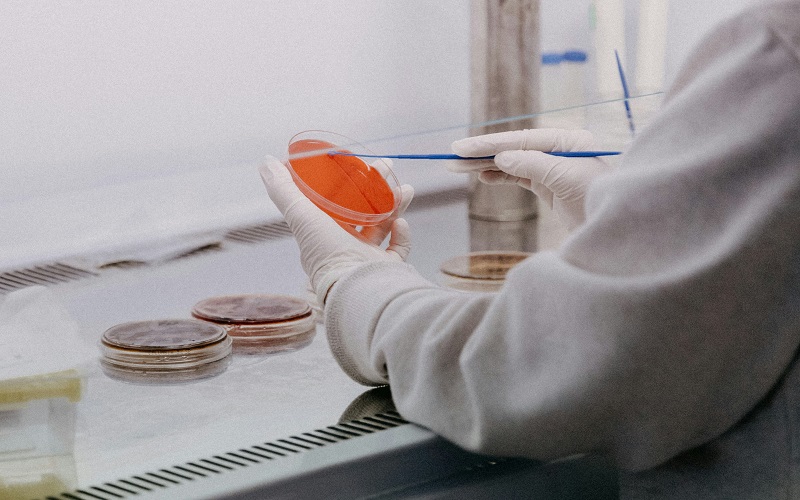In the vast realm of cellular biology, there are a number of proteins that play pivotal roles in shaping the destiny of cells and tissues. One such protein that has garnered significant attention from researchers is TGFB3 (Transforming Growth Factor Beta 3). TGFB3 is a member of the transforming growth factor beta (TGF-β) superfamily and is involved in various cellular processes, including embryonic development, tissue repair, and disease progression. In this blog post, we will delve into the fascinating world of TGFB3 protein and explore its functions, mechanisms, and potential implications in human health.
First discovered in the early 1990s, TGFB3 was initially identified as a growth factor that regulates cell proliferation, differentiation, and apoptosis. It is known to be expressed in various tissues and organs during embryonic development, where it plays a critical role in the formation of structures such as the heart, lungs, and limbs. TGFB3 acts as a signaling molecule, binding to specific receptors on the surface of target cells and initiating a cascade of intracellular events that ultimately regulate gene expression and cellular behavior.
One of the key functions of TGFB3 is its involvement in tissue morphogenesis and organogenesis. During embryonic development, TGFB3 is responsible for regulating the growth and differentiation of various cell types, ensuring the proper formation of tissues and organs. For example, TGFB3 is essential for the development of the palate, where it controls the fusion of the palatal shelves during palate formation. Dysregulation of TGFB3 can lead to cleft palate, a common birth defect characterized by a gap in the roof of the mouth.
Furthermore, TGFB3 is involved in tissue repair and wound healing processes. It promotes the migration and proliferation of fibroblasts, which are key cells involved in the synthesis of extracellular matrix components and tissue remodeling. TGFB3 also regulates the production of collagen, a crucial protein that provides structural support to tissues. Dysfunction of TGFB3 signaling can impair the healing process and lead to delayed wound closure and tissue fibrosis.
In addition to its role in development and tissue repair, TGFB3 has been implicated in various diseases, including cancer. It can act as both a tumor suppressor and a tumor promoter, depending on the context and stage of the disease. In early stages of cancer, TGFB3 functions as a tumor suppressor by inhibiting cell proliferation and promoting apoptosis. However, in advanced stages, cancer cells can hijack the TGFB3 signaling pathway to promote tumor growth, invasion, and metastasis. Understanding the intricate mechanisms underlying TGFB3’s dual role in cancer could provide valuable insights for the development of targeted therapies.
Moreover, TGFB3 has been implicated in fibrotic diseases, such as pulmonary fibrosis and liver fibrosis. Excessive activation of TGFB3 signaling can lead to the accumulation of extracellular matrix components, resulting in tissue scarring and organ dysfunction. Targeting TGFB3 signaling pathways has emerged as a potential therapeutic strategy for the treatment of fibrotic diseases, with the aim of inhibiting fibrosis progression and promoting tissue regeneration.
Given its diverse functions and implications in human health, TGFB3 has become an attractive target for therapeutic interventions. Researchers are exploring various strategies to modulate TGFB3 activity, with the aim of developing novel treatments for diseases such as cancer, fibrosis, and developmental disorders. For example, small molecules that can selectively activate or inhibit TGFB3 signaling could potentially be used to regulate cell behavior and tissue regeneration.
Furthermore, understanding the complex regulatory networks involving TGFB3 could provide valuable insights into the mechanisms underlying cellular development, tissue repair, and disease progression. By deciphering the intricate interactions between TGFB3 and its downstream effectors, researchers can gain a deeper understanding of how cells and tissues respond to external cues and how dysregulation of these processes can lead to disease.
In conclusion, TGFB3 protein is a fascinating molecule that plays a critical role in embryonic development, tissue repair, and disease progression. Its involvement in tissue morphogenesis, wound healing, and disease pathogenesis highlights its significance in cellular biology and human health. Further research into the mechanisms and functions of TGFB3 could pave the way for novel therapeutic interventions and provide valuable insights into the intricate world of cellular development and disease.




